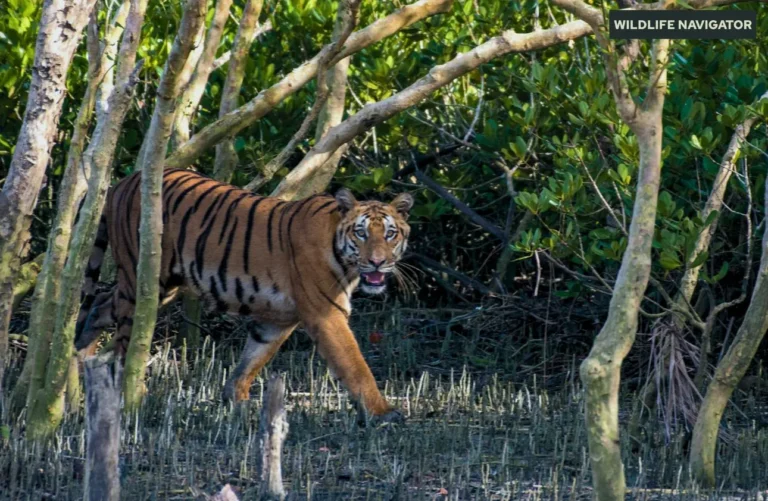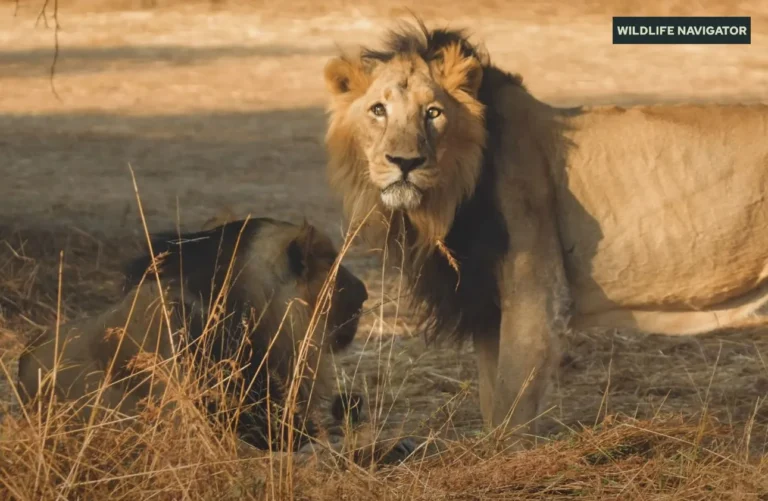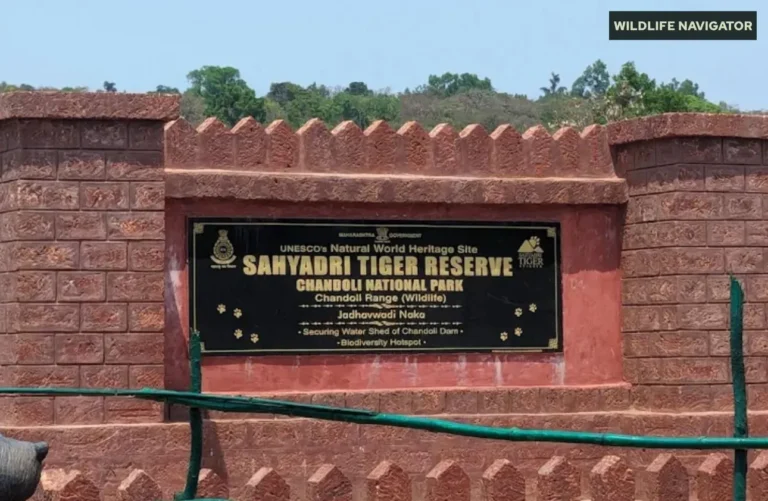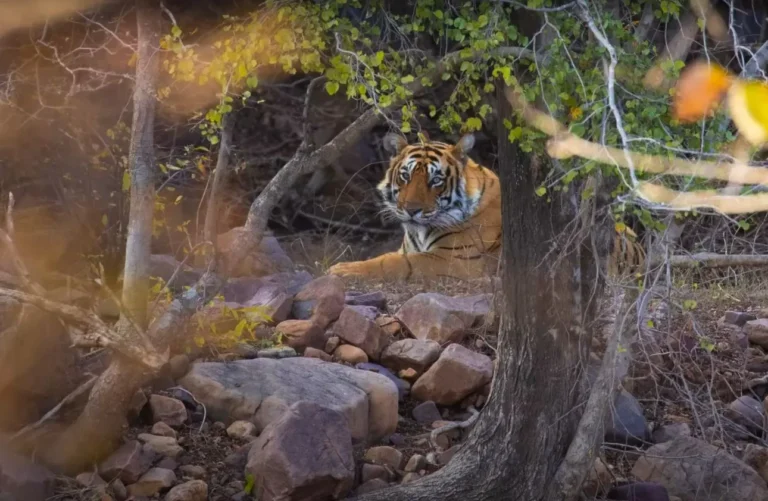Bhagwan Birsa Biological Park – Timings, Ticket Prices, Wildlife & More

Bhagwan Birsa Biological Park—popularly known as Birsa Zoo or Ranchi Zoo—is one of Jharkhand’s most vibrant wildlife destinations, offering a refreshing escape into nature just a short drive from Ranchi city. Spread across lush greenery in Ormanjhi, this biological park beautifully blends conservation, education, and recreation, making it a favourite weekend spot for families, students, and wildlife enthusiasts.
Designed to resemble natural habitats as closely as possible, the park is home to a diverse range of animals, birds, and reptiles, from majestic tigers and lions to colourful peacocks and rare deer species. Its serene lake, shaded walking trails, and eco-friendly enclosures make the visiting experience calm, immersive, and enjoyable.
More than just a zoo, Bhagwan Birsa Biological Park plays an important role in wildlife conservation and rescue efforts in Jharkhand. The park’s emphasis on environmental awareness, combined with its modern facilities and well-maintained surroundings, has helped it grow into one of the most visited attractions in the region.
Whether you’re seeking wildlife photography opportunities, a peaceful nature walk, or a fun and educational day out with children, Birsa Biological Park offers something for everyone.
History and Establishment
orBhagwan Birsa Biological Park was established with the vision of creating a modern, eco-friendly zoological space that could support wildlife conservation while offering visitors an educational yet enjoyable experience. Named after the legendary tribal freedom fighter Birsa Munda, the park symbolises Jharkhand’s commitment to preserving its natural heritage.
The development of the zoo began in the late 20th century when the need for a scientifically designed biological park was strongly felt in Ranchi. The earlier zoo facilities inside the city were limited in space and infrastructure, prompting the shift to a much larger, more natural setting in Ormanjhi, approximately 20 km from Ranchi. This new location offered expansive forested land, ideal for creating spacious enclosures and maintaining natural ecosystems.
Over the years, the park has steadily expanded its range of species, improved visitor amenities, and introduced programs focused on breeding, rescue, and rehabilitation of wildlife. Today, Bhagwan Birsa Biological Park stands as one of the best-managed zoos in eastern India, attracting lakhs of visitors annually while continuing to contribute to conservation research and wildlife awareness.
Location and Geography
Bhagwan Birsa Biological Park is located in Ormanjhi, around 20 km from Ranchi, the capital city of Jharkhand. Its strategic position along the Ranchi–Ramgarh highway makes it easily accessible for both local residents and tourists travelling from nearby districts.
The park is spread across a sprawling landscape filled with natural forests, gentle slopes, and a serene lake, offering a refreshing environment that closely resembles the wild habitats of the species it hosts. Unlike many urban zoos, Birsa Biological Park is set amid an eco-rich environment, allowing animals to thrive in enclosures designed to feel closer to nature.
The surrounding region features abundant sal and mixed deciduous forests, creating a cool and shaded atmosphere that enhances the visitor experience. The natural lake inside the park adds to its charm, attracting a variety of birds and providing scenic viewpoints for photography and relaxation.
Thanks to its green surroundings, open spaces, and sustainable layout, the park acts as a vital green lung near Ranchi—making it not only a wildlife attraction but also a peaceful nature retreat for visitors.
Major Attractions of Bhagwan Birsa Biological Park
Bhagwan Birsa Biological Park is home to a rich collection of animals, birds, and reptiles, making it an exciting destination for wildlife enthusiasts. The zoo is thoughtfully divided into different sections, each designed to offer visitors a closer and more natural view of its diverse species.
Mammals
The mammal section is one of the biggest highlights of the park, showcasing some of India’s most iconic wildlife species.
- Royal Bengal Tigers – The star attraction of the zoo, admired for their power and beauty.
- Asiatic Lions – A rare sight in eastern India, drawing huge crowds.
- Leopards – Elusive and graceful, housed in spacious enclosures.
- Sloth Bears – Known for their shaggy appearance and playful behaviour.
- Elephants – A major attraction, often seen enjoying their naturalistic spaces.
- Deer Species – Including Sambar, Chital, Barking Deer, and Hog Deer, adding charm to the natural forest surroundings.
These enclosures are designed with a focus on space, safety, and natural behaviour patterns, allowing visitors to observe animals in a relaxed environment.
Birds
The aviary section offers vibrant colours and lively sounds, making it a favourite among children and bird lovers.
- Indian Peafowl
- Parakeets
- Ducks and Geese
- Herons and Egrets
- Kites and other raptors
The lake and surrounding greenery naturally attract many wild and migratory birds as well.
Reptiles
For those curious about reptiles, the park hosts an intriguing collection.
- Mugger Crocodiles
- Indian Rock Pythons
- Cobra Species
- Turtles and Tortoises
The reptile house is designed for safety and visibility, offering an educational experience for visitors.
Botanical Attractions
Apart from wildlife, the park is also a treat for nature lovers.
- Shaded pathways lined with tall trees
- A calm lake where visitors can relax
- Native plant varieties that support local biodiversity
- Small gardens and resting areas throughout the park
The mix of flora and fauna creates a refreshing environment perfect for photography, picnics, and nature walks.
Zoo Safari and Experiences
Bhagwan Birsa Biological Park offers a variety of experiences that make the visit enjoyable, educational, and memorable for visitors of all ages. While it is not a traditional safari-style park like large tiger reserves, it provides several engaging activities and viewing opportunities within its beautifully planned space.
Animal Viewing Zones
The zoo features spacious and naturalistic enclosures where visitors can observe animals comfortably. Wide walkways, shaded seating areas, and thoughtfully placed viewing points ensure that you get a clear and safe look at the wildlife.
Battery-Operated Vehicle Ride
For visitors who prefer a relaxed tour, the park offers battery-operated vehicle rides (depending on availability). These eco-friendly vehicles provide a convenient way to explore the entire park without much walking.
- Ideal for families with children
- Helpful for elderly visitors
- Covers major animal sections quickly
Boating Facility (If Operational)
The serene lake inside the park occasionally offers boating activities, allowing visitors to enjoy a peaceful ride surrounded by greenery. Availability may vary depending on maintenance or seasonal conditions.
Boating adds a refreshing recreational element to the visit and is especially enjoyable during pleasant weather.
Nature Walks
One of the highlights of the park is its shaded trails and forest-like paths. Visitors can enjoy:
- Slow, immersive nature walks
- Photography opportunities
- Birdwatching along the lakeside
- Relaxing pauses at benches and rest areas
These trails provide a calming experience away from the noise of the city.
Children’s Park
The dedicated kids’ play area inside the zoo makes it a perfect family destination. Children can enjoy:
- Slides and swings
- Open play zones
- Animal-themed sculptures
- Educational signboards
This area ensures that young visitors stay engaged throughout the visit.
Informational and Educational Displays
The park places a strong focus on wildlife awareness. Visitors will find:
- Signboards detailing species information
- Conservation messages
- Educational displays near enclosures
- Awareness campaigns on local wildlife
These elements help visitors understand the importance of wildlife protection and ecological balance.
Conservation Efforts and Breeding Programs
Bhagwan Birsa Biological Park is more than just a recreational destination—it plays a significant role in wildlife conservation, research, rescue, and rehabilitation in Jharkhand. The zoo actively contributes to protecting endangered species and spreading awareness about biodiversity among the public.
Wildlife Conservation Initiatives
The park engages in several conservation-driven activities aimed at safeguarding wildlife:
- Protection of native species found in Jharkhand’s forests
- Collaboration with forest departments for rescuing injured or displaced animals
- Scientific care and proper diet planning for all species
- Habitat enrichment programs to promote natural behaviour in animals
These efforts ensure that the zoo functions as a centre of care and protection, rather than just a display.
Breeding Programs
The zoo participates in controlled breeding programs that help sustain populations of threatened species:
- Big cats such as tigers and leopards
- Herbivores including different deer species
- Reptile breeding, particularly for crocodiles
Breeding programs are carried out under expert supervision to ensure genetic diversity and healthy offspring.
Rescue and Rehabilitation
Being one of Jharkhand’s primary wildlife care centres, the park often supports the state forest department in:
- Rescuing animals injured in road accidents
- Providing shelter to animals seized from illegal captivity or trade
- Offering medical treatment in the zoo’s state-of-the-art veterinary hospital
- Rehabilitating suitable animals back into protected forest areas
These activities make Birsa Biological Park an important partner in regional wildlife management.
Environmental Awareness and Education
Awareness is a key focus of the park’s mission. Throughout the year, the zoo organises:
- Wildlife education programs for school and college groups
- Celebrations of events like World Wildlife Day, World Environment Day, and Zoo Day
- Workshops and interactive sessions
- Signboards and informational displays promoting responsible behaviour
Such initiatives help visitors understand the significance of conservation and encourage eco-friendly thinking.
Ticket Prices and Timings
Entry Ticket Prices
- Adult (age 12 or more): ₹ 60 for an individual ticket.
- Child (3–12 years): ₹ 20 for an individual ticket.
- Group Tickets (25 or more people):
- Adults: ₹ 40 per person
- Children (3–12 yrs): ₹ 15 per person
- Free entry for children (below 3 years) or specially handicapped visitors in some cases.
- Special Rates: On 31st Dec, 1st & 2nd Jan: Adults pay ₹ 70, and children (3–12 yrs) pay ₹ 30.
Aquarium and Butterfly Park – Separate Tickets
- Aquarium (Adult): ₹ 30
- Aquarium (Child): ₹ 15
- Butterfly Park (Adult): ₹ 30
- Butterfly Park (Child): ₹ 15
- Combo ticket (Aquarium + Butterfly):
- Adult: ₹ 55
- Child: ₹ 25
Other Charges
- Boating (Paddle Boat, 2-seater): ~₹ 50 per 15-minute trip (as per visitor guides)
- Battery-operated vehicle (EV) ride: ~₹ 50 per seat per hour.
- Still Camera: ~₹ 10 per day (for photography).
- Video Camera (for personal use): ~₹ 150 (per day) according to the older CZA report.
- Parking:
- Car: ~₹ 50 per day (per some sources)
- Two-wheeler/auto: lower rate (varies by source)
Timings
- Opening Hours:
- From 16 February to 15 October: 9:00 AM – 4:30 PM
- From 16 October to 15 February: 9:00 AM – 4:00 PM
- The park is closed on Mondays.
- Note: On the official site, they mention “ticket window closes earlier” in the off-season or winter.
Best Time to Visit
The best time to visit Bhagwan Birsa Biological Park is generally from October to February, when the weather is pleasant and ideal for walking through the park.
Ideal Seasons
- Winter (Oct–Feb): Cool temperatures, comfortable for long walks, animals more active.
- Post-Monsoon (Sep–Oct): Fresh greenery, clearer views, good for photography.
Seasons to Avoid
- Peak Summer (Apr–Jun): Hot and humid; animals often rest in shaded areas, reducing sightings.
- Heavy Monsoon (Jul–Aug): Trails may be wet; boating may remain closed.
Tips for the Best Experience
- Visit early morning for active wildlife and better lighting.
- Prefer weekdays to avoid crowds.
- Carry essentials like water, sunglasses, and a cap during sunny months.
How to Reach
Bhagwan Birsa Biological Park is conveniently located in Ormanjhi, making it easy to access from Ranchi and nearby districts. Whether you’re travelling by air, train, or road, reaching the park is straightforward.
By Air
- The nearest airport is Birsa Munda Airport, Ranchi, located about 25–30 km from the zoo.
- From the airport, you can take:
- Prepaid taxis
- App-based cabs (when available)
- Private car rentals
Travel time: 40–50 minutes, depending on traffic.
By Train
- The nearest major railway station is Ranchi Junction, approximately 20–22 km from the park.
- Auto-rickshaws, buses, and taxis are easily available outside the station.
Travel time: 30–40 minutes.
By Road
Birsa Zoo is well-connected through the Ranchi–Ramgarh Highway (NH 20), making road travel the easiest option.
You can reach via:
- Personal car or bike
- Local buses heading toward Ormanjhi/Ramgarh
- Shared autos and tempos from nearby points
- Cabs are available throughout Ranchi city
Parking is available near the zoo entrance.
Distance From Key Points
- Ranchi City Centre: 18–20 km
- Ranchi Airport: 25–30 km
- Ranchi Junction: 20–22 km
- Ramgarh: 30–35 km
Conclusion
Bhagwan Birsa Biological Park is one of the most refreshing and educational destinations in Ranchi, offering a perfect blend of wildlife, nature, and relaxation. Its spacious enclosures, shaded pathways, and scenic lake make it an ideal getaway for families, students, and nature lovers seeking a peaceful break from city life.
Beyond being a recreational spot, the zoo plays a crucial role in wildlife conservation, rescue, and awareness across Jharkhand. With its growing facilities, active breeding programs, and well-maintained environment, it continues to remain a must-visit attraction in the region.
Whether you’re planning a weekend outing, looking to educate children about wildlife, or simply hoping to spend a few hours surrounded by greenery, Bhagwan Birsa Biological Park promises an enjoyable and meaningful experience. It is a reminder of why preserving nature and wildlife is essential—and how such spaces help us stay connected to the incredible biodiversity of India.





